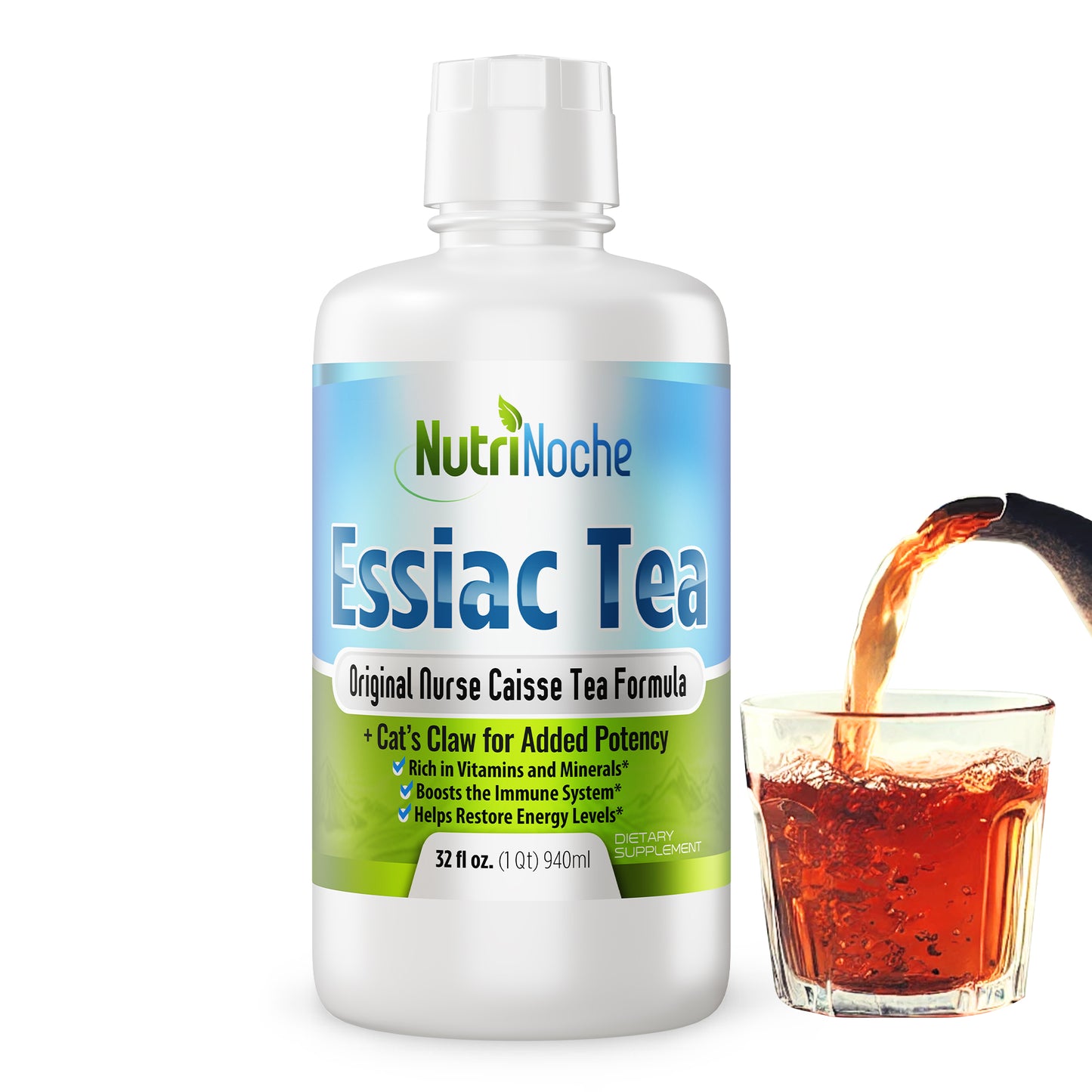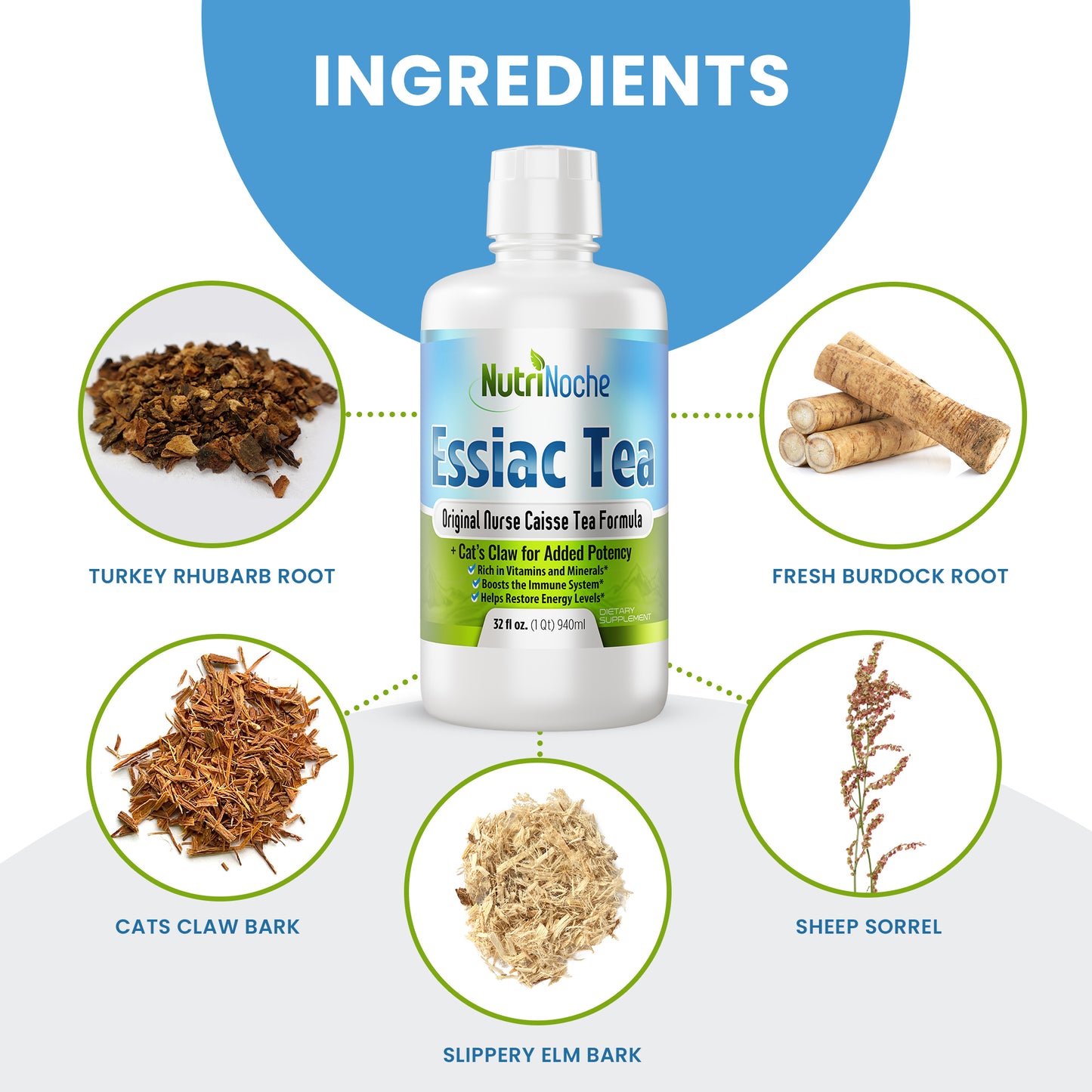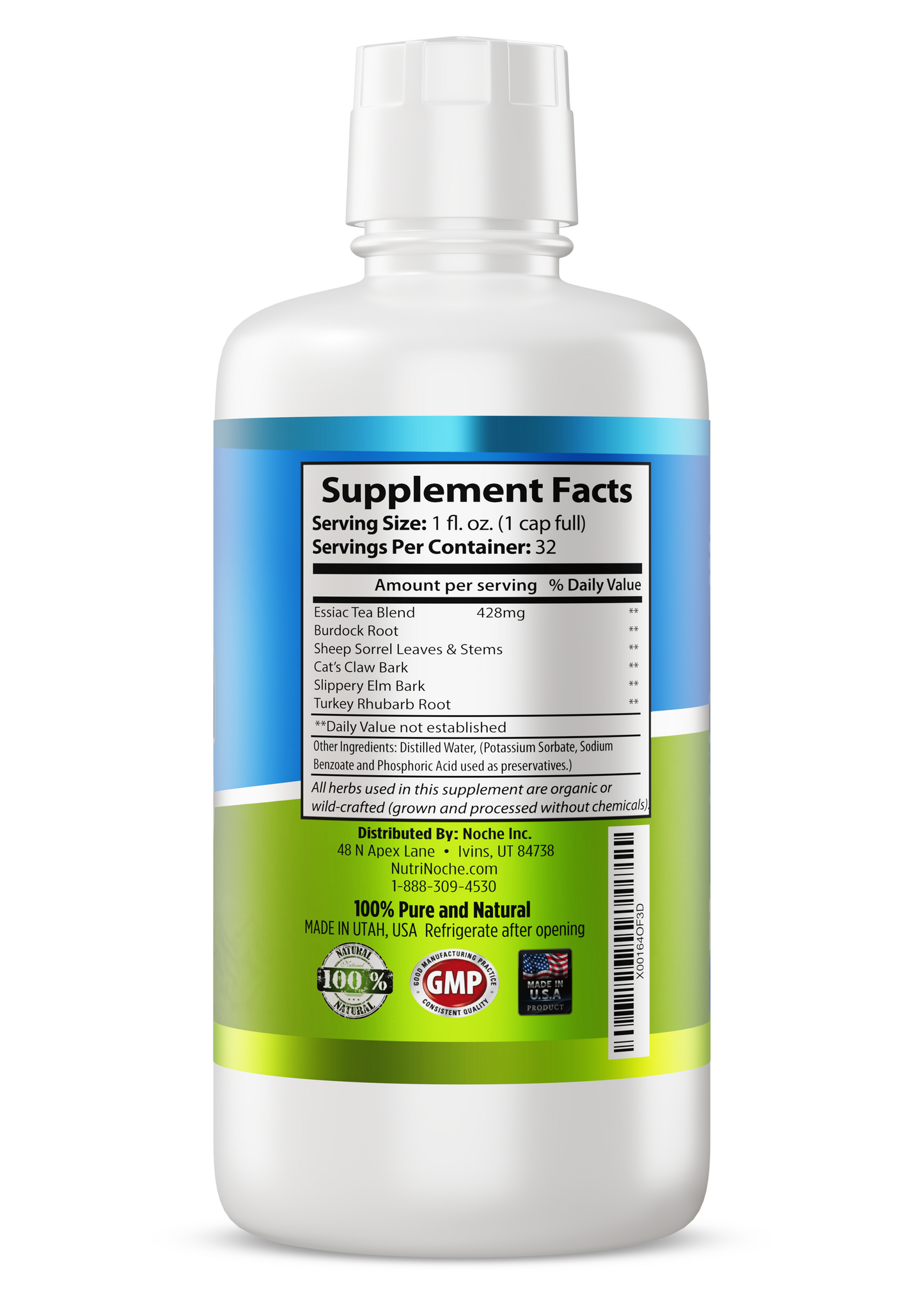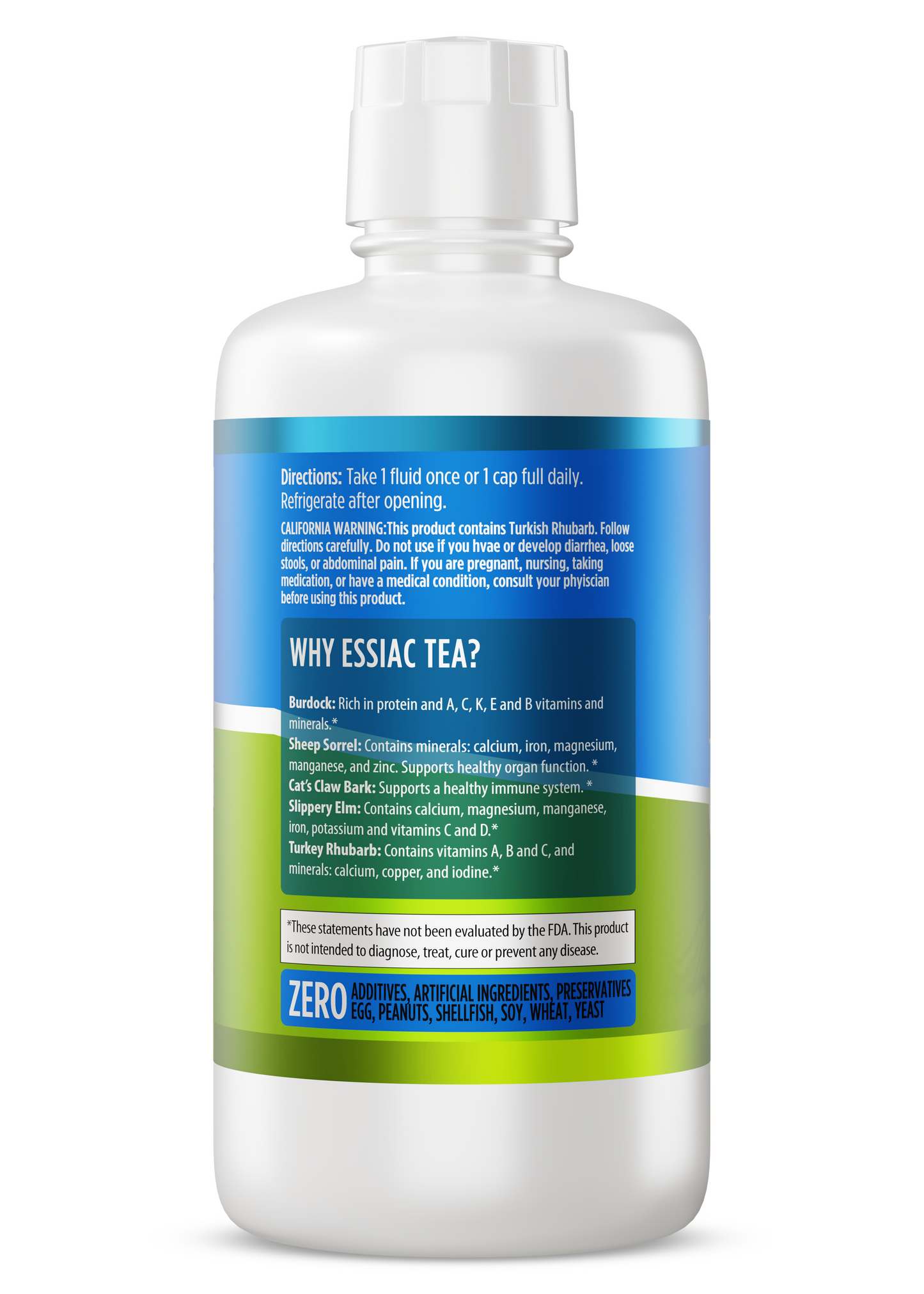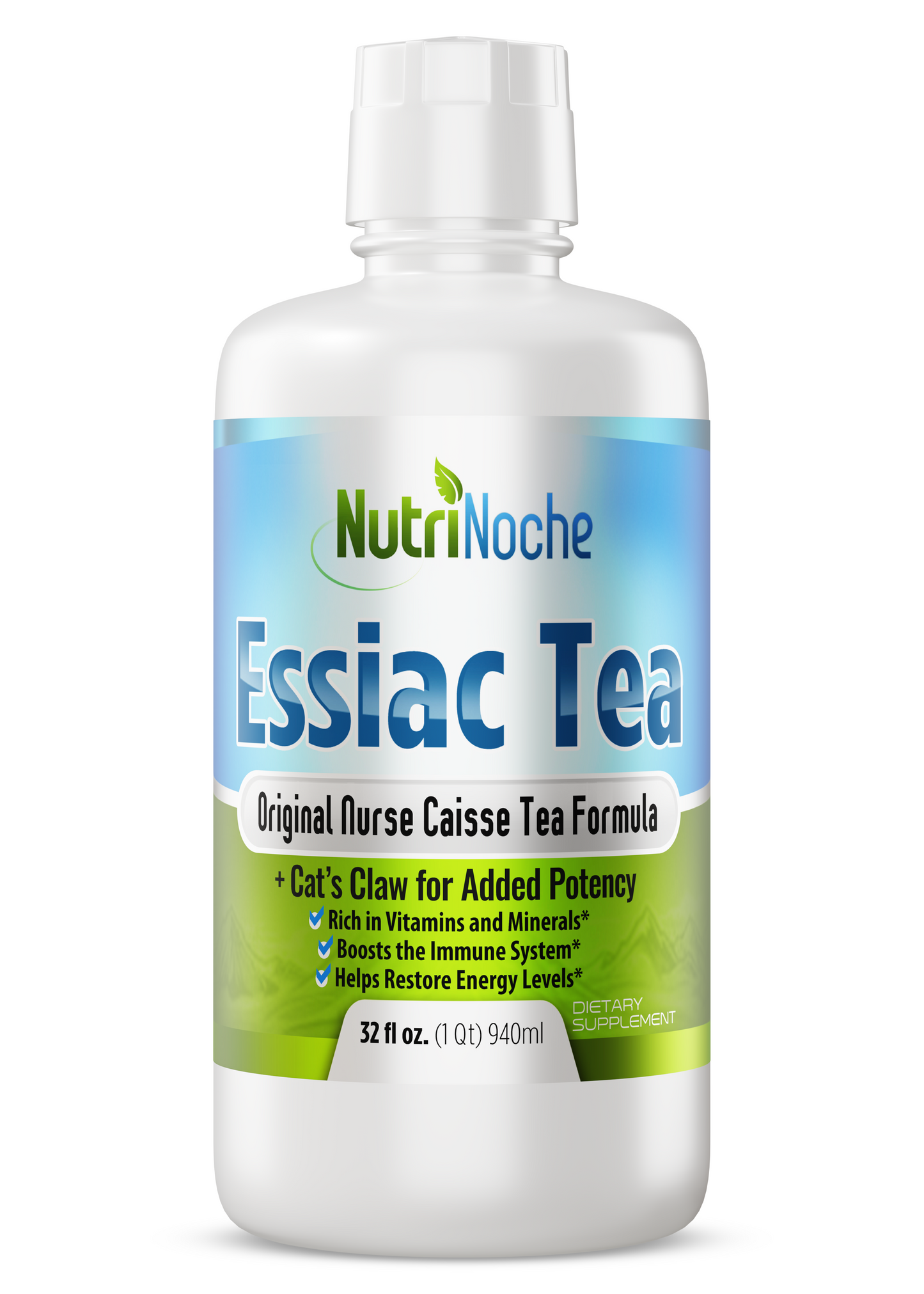
The Top 7 Benefits of Essiac Tea
Share
Essiac Tea: 7 Potential Benefits, Ingredients, Origins & FAQs
Essiac tea is a traditional herbal blend often associated with the teachings shared publicly by nurse René Caisse in the 1920s. While many people enjoy Essiac as part of a personal wellness routine, evidence for specific medical uses is limited. Below you’ll find the key ingredients, a quick history, seven commonly discussed benefits, safety notes, and FAQs—plus a link to NutriNoche Essiac Herbal Tea.

Key Takeaways
- Essiac is a long-standing herbal infusion enjoyed as a simple wellness ritual.
- Classic core herbs include burdock root, sheep sorrel, slippery elm inner bark, and Indian/turkey rhubarb root.
- Experiences vary; claims for specific diseases are unproven. Always consult your clinician for medical concerns.
What Is Essiac Tea?
Essiac is a concentrated herbal tea traditionally brewed, refrigerated, and sipped daily. People often include it in routines focused on calm, balance, and a mindful, warming beverage ritual.
Ingredients (Classic Formula & NutriNoche Blend)
- Burdock Root (Arctium lappa) – classic base herb in Essiac traditions.
- Sheep Sorrel (Rumex acetosella) – traditionally used whole plant, including roots.
- Slippery Elm Inner Bark (Ulmus rubra) – valued for a soothing mouthfeel in teas.
- Indian/Turkey Rhubarb Root (Rheum palmatum) – used in small proportion in classic recipes.
- Cat’s Claw Bark (Uncaria tomentosa) – included in the NutriNoche blend.
Origins & Discovery
The story most often told traces Essiac to knowledge shared with nurse René Caisse in Canada during the 1920s, with roots attributed to an Ojibwa healer. Caisse popularized the blend and operated a clinic in Bracebridge, Ontario, for many years.
Top 7 Potential Benefits
- Fights inflammation (tradition & user reports): Many people include Essiac in routines aimed at day-to-day balance and comfort. Experiences vary.
- Antioxidant discussion: Research summaries sometimes describe antioxidant activity in herbal components; real-world impact for individuals is uncertain. See an example abstract on PubMed: link.
- Free-radical support themes: Fans often mention “oxidative stress” balance in general wellness contexts (not a substitute for medical care).
- Antimicrobial heritage: Indian/turkey rhubarb and other botanicals appear in traditional herbals; formula-level effects for specific conditions are unproven.
- “Detox” ritual: Burdock root is widely discussed in folk herbalism; people may use Essiac as a simple reset ritual alongside hydration and rest.
- Skin-wellness conversations: Burdock (Arctium lappa) appears in literature exploring circulation and complexion; formula outcomes can differ from single-herb studies.
- Immune routine support: Some users include Essiac in a daily wellness stack for general resilience. Evidence for disease outcomes is limited.
Important: Dietary herbals are not intended to diagnose, treat, cure, or prevent disease. Talk with your clinician for medical guidance.
How People Use Essiac
Many prepare a batch, refrigerate the concentrate, and sip a small daily serving (often mixed with warm—not boiling—water). Always follow your product label and your healthcare professional’s advice.
Safety & Precautions
- Pregnancy & nursing: Consult your clinician before use.
- Medication check: If you take prescriptions (e.g., blood thinners or meds affecting liver/kidney function), seek medical advice before adding herbals.
- Allergies/sensitivities: Review the herb list and discontinue if adverse reactions occur.
- Storage: Refrigerate brewed concentrate; prepare smaller batches regularly and follow label storage guidance.
Shop NutriNoche Essiac Herbal Tea
Explore the NutriNoche blend featuring the classic botanicals with added cat’s claw bark. Buy Essiac Herbal Tea
Top 10 Essiac FAQs
1) What is Essiac tea?
A traditional herbal infusion typically brewed as a concentrate and sipped daily as part of a personal wellness ritual.
2) What herbs are in Essiac?
Classic formulas include burdock root, sheep sorrel, slippery elm inner bark, and Indian/turkey rhubarb root. NutriNoche also includes cat’s claw bark.
3) How do I drink it?
Commonly: a small measured serving of concentrate mixed with warm (not boiling) water on an empty stomach. Follow your product’s label and clinician guidance.
4) Does Essiac detox the body?
“Detox” is a popular theme in herbal traditions, but specific medical claims aren’t established. Hydration, sleep, and nutrition remain core lifestyle factors.
5) Is there clinical evidence for disease treatment?
Evidence is limited and mixed. Essiac is a dietary herbal product and is not intended to diagnose, treat, cure, or prevent disease.
6) Is Essiac safe in pregnancy or while nursing?
Consult your healthcare professional before use; many herbals are not recommended during pregnancy or lactation.
7) Can Essiac interact with medications?
Potentially. If you use prescriptions (e.g., blood thinners or meds affecting liver/kidney function), talk to your clinician before use.
8) How long does a batch last in the fridge?
Storage time varies with sanitation and bottling practices. Prepare smaller batches regularly and follow your product’s storage guidance.
9) What does Essiac taste like?
Earthy and herbal, sometimes slightly bitter depending on steep time and herb proportions. A splash of warm water helps many people sip it comfortably.
10) Where can I buy NutriNoche Essiac Tea?
Shop the product page: https://nutrinoche.com/products/nutrinoche-essiac-tea-herbal-supplement



